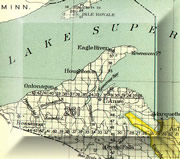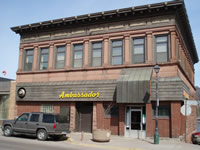The list, which is by no means definitive, consists of people who self-identified as architects, only a few of whom were known to have had formal training. The first we could identify was J. B. Sweatt, who designed the Red Jacket Village Hall in 1885. The Copper Country’s greatest architectural activity occurred in the early 20th century when the copper-mining industry was booming. For the period after 1920, only a handful of firms, all of them nationally known, are included; for the sake of brevity, no firm currently located in the Copper Country is included.
The Biographical Dictionary of Copper Country Architects began as a project for the MTU Spring 2006 class of SS3515, History of American Architecture, under the supervision of Professor Kim Hoagland. Each student was assigned an architect to investigate, and these pages present the core of their work. Our thanks to Katie Torrey for being the inspiration for this project, due to the research she did on C. A. Pearce. Department of Social Sciences major Julie Matijega, through a Summer Undergraduate Research Fellowship, edited the students’ papers, researched missing pieces, and standardized the presentation. The website was constructed by Sue Hill, web media specialist for Michigan Tech. Our thanks also to Jeremiah Mason, archivist at Keweenaw National Historical Park, for his contribution of some additional entries during the editing process. This dictionary is a work in progress, and we would welcome corrections and additions, which can be considered by contacting Kim Hoagland, Professor of History and Historic Preservation, Department of Social Sciences, Michigan Technological University, at hoagland -at -mtu.edu.
|



 The
The  Buildings were identified as being the work of specific architects through a variety of primary and secondary sources. The most valuable secondary works are two books by Kathryn Bishop Eckert,
Buildings were identified as being the work of specific architects through a variety of primary and secondary sources. The most valuable secondary works are two books by Kathryn Bishop Eckert,